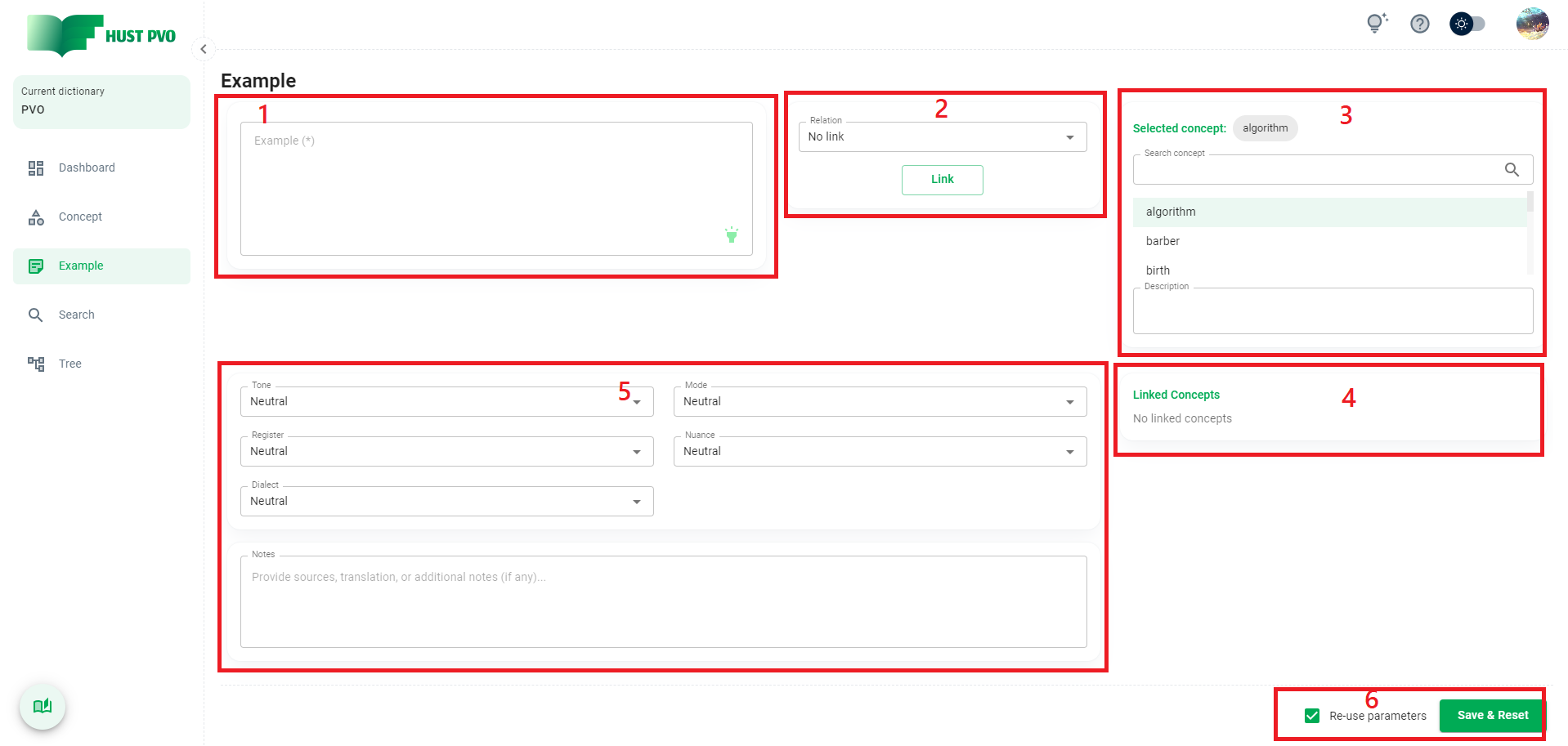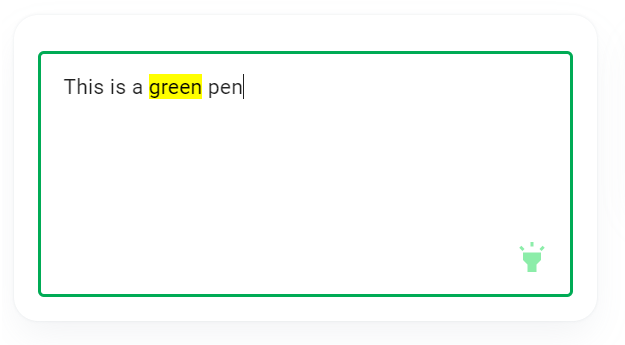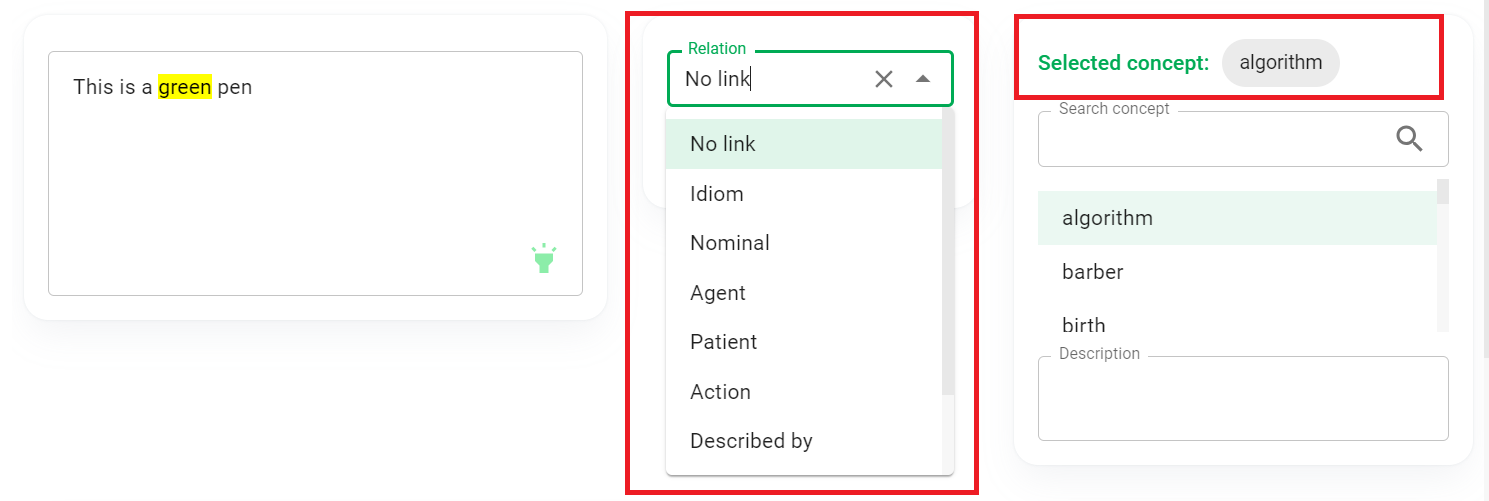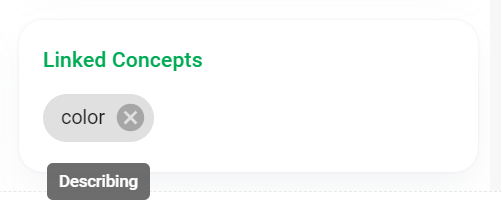Example
This section describes the Example screen.
Overview

- Example content.
- Combobox allows to choose the type of association between example and concept.
- Search box and concept search results.
- List of linked concepts.
- Attributes of examples and notes.
Savebutton and checkbox to remember parameters
Example content
The Example content is a required field. The maximum length of the example content is 1000 characters. You need to highlight part or all of the content for example.
You can't add 2 duplicate examples. Two examples are considered duplicate if they match both the content and the highlighted part.
The Example field is automatically focused to help you enter data quickly.

Establish links between example and concept
After you have selected the concept in the search results list, you can choose the type of association between the example and the concept.
No link is not actually a type of link. It is used to remove the link between an example and a concept. No link is the default relationship.

Click the Link button, the concept will be displayed in the linked concept list. If you hover a concept in this list you will see the established relationship.

To edit an established link, you can perform a concept search again or click on the corresponding concept in the list of linked concepts. Then you change the link type and click Link button to temporarily save the settings. You can change the link type to No link to remove the link.
Attributes of examples and notes
You can choose the tone, mode, register, nuance and dialect of the example. These attributes help indicate when you should use the example in practice.
Tone values include: Neutral (default), Informal, Formal, Slightly informal, Slightly formal.
Mode values include: Neutral (default), Spoken, Written.
Register values include: Neutral (default), Academic, Literature, Business, Law, Journalism, Medicine, IT, Other (Add a more specific description in the note field).
Nuance values include: Neutral (default), Old fashioned, Humorous, Oft positive, Oft negative.
Dialect values include: Neutral (default), American, British, Other (Add a more specific description in the note field).
In addition to the above attributes, you can provide other descriptions in the Notes field, such as source, translation, etc.
Save & Reset
Before saving, you can choose to check or uncheck the Re-use parameters checkbox. Then click Save & Reset to add the example.
If the Re-use parameters checkbox is checked, the parameters you have set: tone, mode, register, nuance, dialect and notes will be preserved when the form is reset. Otherwise, all parameters will be reset to default.
Undeciced example
An example that is not associated with any concept is classified as Undecided example. You can search for these examples using the Only search undecided examples feature in the Search screen.